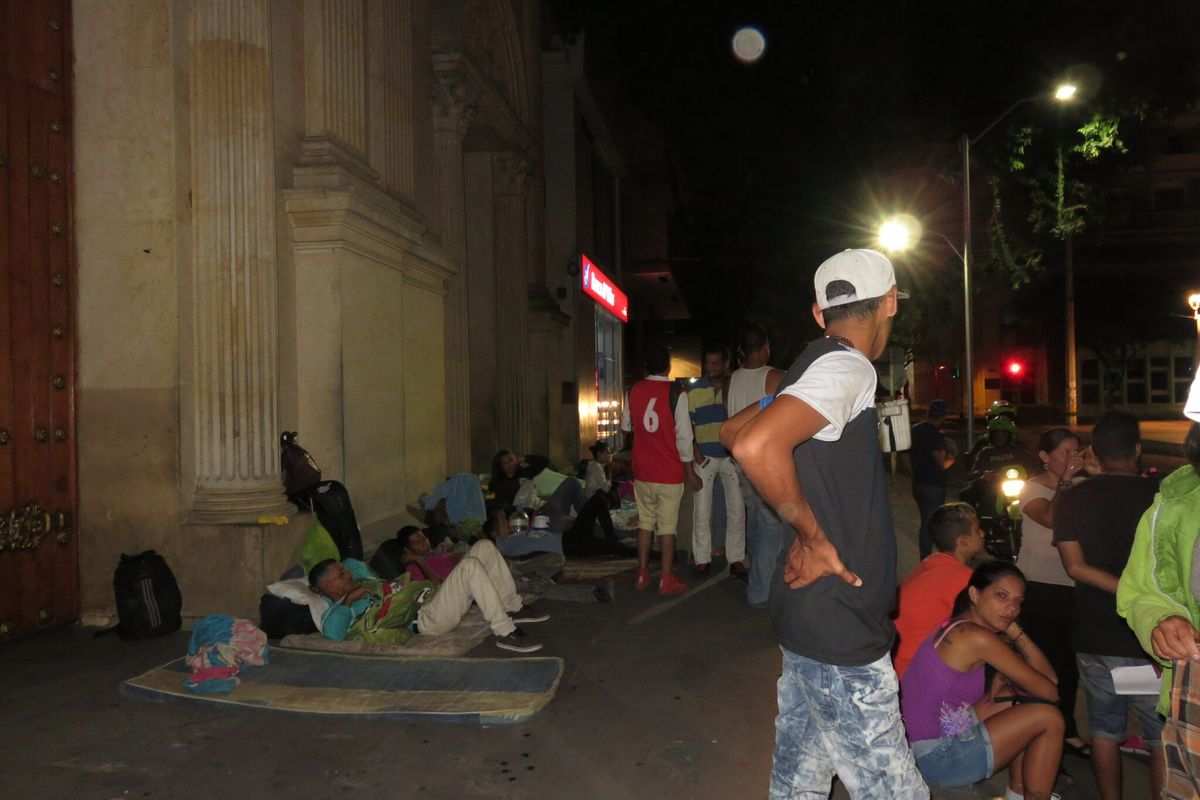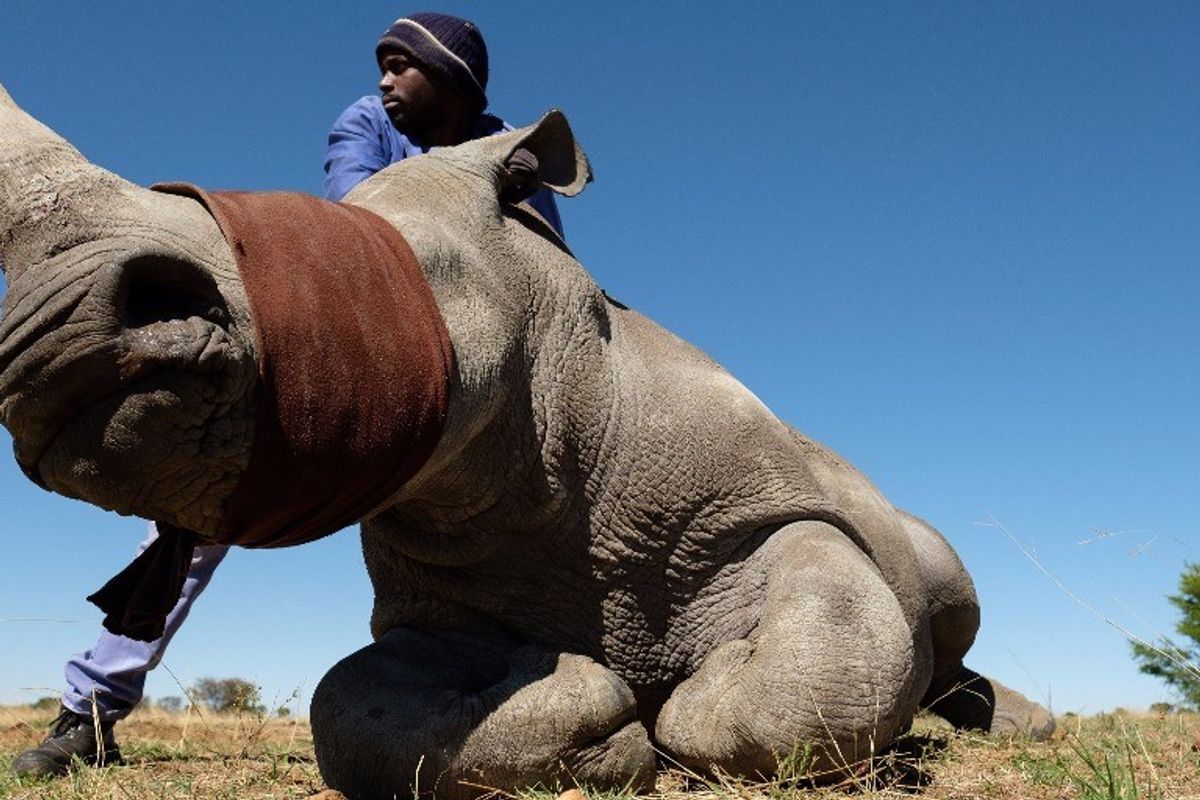With over 30 years working as a Drug Enforcement Administration (DEA) agent, Michael Vigil has an extensive understanding of illicit trafficking networks. The former DEA Chief of International Operations shared with The Cipher Brief how drug trafficking in Latin America must be addressed–or risk being a destabilizing force for Latin American and the U.S.
The Cipher Brief: Although illicit networks are global phenomena, Latin America seems to be a particular hotbed for organized criminal groups. Where in Latin America are the groups most prevalent? What has allowed them to emerge at such a large rate?
Michael Vigil: Without question, the most powerful and increasingly violent transnational organized groups operating in Latin America are Mexican drug trafficking organizations. To a lessor degree, the Colombian networks are still powerful but no longer control the drug trade as they did in the 1980s and 1990s.
Numerous factors contributed to the rise and dominance of Mexican drug trafficking organizations. In the 1980’s, the Colombian drug networks, especially the Medellin and Cali cartels, began to incur heavy losses along their primary transshipment routes in the Caribbean Sea. The U.S., in response to the threat, began to pour more assets in the form of aerial, maritime, and various radar platforms into the area, which led to the seizure of hundreds of tons of cocaine and marijuana.
Pablo Escobar, head of the Medellin Cartel, and Miguel and Gilberto Rodriguez Orejuela, leaders of the Cali Cartel, decided to shift their routes through Mexico. It was a logical choice, since the Mexican organizations already had existing pipelines into the U.S. for marijuana and heroin. Furthermore, cultural factors, such as common language, facilitated the transition. Aggressive actions and a strong comprehensive strategy by the U.S. and Colombian governments eventually led to the dismantling of the powerful Medellin Cartel with the killing of Escobar in 1993 and the Cali Cartel with the capture and extradition of the Rodriguez Orejuela brothers two years later.
As a result, Mexican organizations went from being couriers for the Colombians to controlling the highly profitable wholesale cocaine markets in the U.S. Other factors contributing to the situation were changes to Mexico’s policies of selling communal lands (“ejidos”) and the change to a primary export economy, both of which led to massive unemployment under former President Carlos Salinas de Gortari. This resulted in devastating consequences to the country, and many citizens, especially the poor, were left without jobs. They turned to drug trafficking as a means to support themselves. It is now estimated that the drug trade is one of the top five employers in Mexico.
In 2008, the Mexican cartels began to develop a new business model where they diversified from illicit drugs to kidnapping, extortion, human trafficking, and theft of mineral resources, such as heavy metals and petroleum. This added a new dimension and with it came hundreds of millions of dollars in profit into the already large coffers of these highly sophisticated criminal networks.
There are two other factors that have enabled these groups to persist: Widespread corruption and impunity has provided official protection to the various cartels, which proliferated, especially under the powerful Institutional Revolutionary Party (PRI) rule. Finally, the U.S. is not entirely innocent, as its huge demand for illicit drugs has provided billions of dollars a year to Mexican and Colombian cartels.
TCB: Help us understand these illicit trafficking networks. Where do the routes begin and end? Through which countries do they travel? What are the networks trafficking?
MV: Drug trafficking organizations have become highly sophisticated. They have established massive backward linkages to ensure continuous supply and forward ones for control of retail sales, which are the most profitable. More importantly, they have created an ingenious horizontal integration to extend their operations into other highly profitable criminal activities. In the event that illicit drugs were legalized, as some have advocated, the illicit networks would be able to survive through this diversification.
Currently, the principal route for illegal drugs entering the U.S. from South America is through the Central American-Mexico corridor. Roughly 85 to 90 percent of all cocaine entering the U.S. flows through Mexico or its territorial waters, and 60 to 65 percent of that cocaine is first transited through Central America. Overland, maritime, and aerial methods are used to transport cocaine from South America to Mexico. Most of the cocaine originates from Bolivia, Peru, Colombia, and Ecuador. In the 1980s and 1990s, the drugs primarily transited through the Caribbean into South Florida.
Recently, a slight shift back to the Caribbean-South Florida route has been detected due to the increased pressure on cartels in Mexico. Authorities will continue to monitor this trend in the event it is the beginning of a major and long-term pattern. Venezuela has become a major transit country for drugs through the Caribbean, principally through Haiti and the Dominican Republic, since cooperation with the U.S. diminished in 2005. Cocaine from Latin America is also shipped to Europe through West Africa. Current estimates indicate that approximately 25 percent of the cocaine being produced in South America is sent to European markets annually. Cocaine departs through the Caribbean or the eastern coast of Brazil for Europe in maritime ships.
Most of the drug trafficking organizations currently in existence are poly drug: they engage in the smuggling of marijuana, cocaine, heroin, and methamphetamine, with the vast majority being transported through the two thousand mile border into the U.S. The drugs are then sent to major cities, such as Los Angeles, Phoenix, Houston, Seattle, Denver, Detroit, Chicago, Miami, Newark, and many others, which act as regional distribution hubs.
TCB: Why do these networks pose a threat to U.S. security? How would you assess the threat of these illicit goods entering the U.S. to U.S. public safety?
MV: Drug trafficking organizations pose a significant and growing threat to the national security of the U.S., with dire consequences to public health, public safety, economic stability, and our democratic institutions. Drug cartels in Mexico make the U.S. border extremely vulnerable, because they maintain numerous illicit corridors for smuggling drugs that can easily be used by terrorist organizations. They are capable of penetrating the political process in a variety of ways, such as bribery; establishing shadow economies; and becoming alternate providers of security, services, governance, and livelihoods. Furthermore, they are adept at undermining free markets as they clandestinely align themselves with politicians, foreign intelligence, and financial institutions through corruption or intimidation. Tragically, they spread corruption and undermine the rule of law, judicial systems, and democratic governance. The national security of our country is also directly linked to the political stability, peace, and functional democratic institutions in other countries. Drug trafficking undermines democracy in developing countries, which create instability in entire regions. So, the threat posed by drugs entering the U.S. is devastating.
The violence generated by drug trafficking is also a serious public safety issue in the U.S. It results from the collection of debt, through rival drug gangs and organizations fighting to protect or expand their market share and profits. It also leads to conflict with law enforcement agencies throughout the country. Drug traffickers cannot resolve their disputes through legal arbitration and therefore resort to violence. As a result, many U.S. neighborhoods have become war zones. In order to support their habits, drug users commit robberies, burglaries, auto theft, kidnappings, and other criminal activities
TCB: Regarding the U.S. money used to purchase these illicit goods, where is the money going and what is it funding? How does this impact Latin American stability?
MV: Drug users in the U.S. spend an estimated $100 billion a year on cocaine, methamphetamine, heroin, and marijuana. This figure has remained stable over the past decade. A large portion of the drug proceeds generated in the U.S. filter into Mexico, usually in bulk currency, and some is sent to other source and transshipment countries in Central/South America and the Caribbean.
The most severe consequence of drug profits and criminal funds is the further perpetration and promotion of criminal activities. The tainted money also promotes bribery and corruption, financial insurgency, and in some cases terrorism. The undermining of political, economic, judicial, and security institutions is rather significant. It also destabilizes and inhibits legitimate enterprise, foreign investment, and development. Drug trafficking clearly constitutes the largest income for transnational organized groups worldwide.
Drug money creates instability in Latin America as it provides transnational drug trafficking networks with the ability to finance electoral campaigns and widespread political corruption, as well as insurgent groups, such as the Revolutionary Armed Forces of Colombia (FARC). Also, once the safety of legitimate investments is jeopardized, the business climate deteriorates and the prospects for new investment decline. Finally, it is difficult to make rational economic policy decisions when underground economies, fueled by drug profits, thrive.









